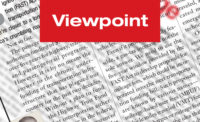Viewpoint: A New Approach to Job Site Safety Reaps Benefits
By Jimmy Morgan and Eric Pfeiffer
Every organization that participates in the construction and manufacturing industries understands that safety is critical to success and strives to end each day injury-free and incident-free.
There is no shortage of complex and sophisticated theories, policies and procedures to implement to govern companies’ safety programs and cultures. But sometimes “more complex” doesn’t necessarily translate into “better safety performance.”
In high-consequence businesses, not showing continuous improvement is unacceptable. Firms that can’t meet customers’ job site safety expectations face the very real risk of being disqualified from bidding the very construction projects that keep them in business.
It may seem counterintuitive at first. But sometimes a simplification and standardization of your organization’s safety plan can achieve the results that have proven elusive.
Companies achieving “good but not great” safety numbers with little continual year-over-year improvement could consider implementing a simplified Target Zero process in a uniform, easier to understand manner, while empowering managers and employees with the ability to communicate and implement five key core processes:
Zero Incident Planning (ZIP) - structured process to evaluate work tasks for hazards and implement hazard controls
Caring Conversations – planned or unplanned safety discussions with employees during the work day and at the job site to coach at risk behaviors and equally important reinforce safe behaviors
Life Saving Rules – simple rules focused on our high risk, high consequence work activities
Office Safety Rules – safety procedures for employees in the office, which are no less important than field safety
Stop Work Authority – empowers every employee with the ability to halt work when a safety issue is recognized.
Many companies establish different responsibilities down the management chain by forming Environmental, Health and Safety (EHS) steering committees and leadership teams with the intent of establishing a management-owned and driven safety culture.
With a consistent, organization-wide plan, you can roll up leading activity performance metrics to gauge the safety energy of the company That’s the second secret. Standardization gives us a broader data pool for trend analysis and the ability to get in front of incidents, trends and emerging issues.
Standardized performance management expectations create built-in accountability. In the past, the performance appraisal process for safety may have been “were you safe or not?” “did you have an incident or not?” After implementing a simple uniform system, it’s “did you conduct caring conversations, participate in the ZIP process, did you go through all of the Target Zero training?” It doesn’t take a safety degree to use these tools. The objective is to build a strong safety culture by involving all employees in the process and providing them tools to help assess risk and plan for safe work.
Finally, the responsibility for delivering safety messages doesn’t have to originate with your EHS department. It’s about managers training their employees. If safety is viewed as just the job of EHS, it’s not truly integrated into the business.
Through these efforts, organizations create transformational leaders by giving them a platform to lead and the opportunities to do so, leading by example, providing positive reinforcement and recognition and establishing accountabilities and demonstrate safety as a value.
The real evaluation of your program’s effectiveness is how deep you’ve penetrated into your workforce with that message. The value to the business is being able to live up to safety as a core value and the idea that people are your greatest asset. This is also of significant value to your customer base. You must meet and surpass your own expectations and your customers’ high expectations in their safety cultures. A safe job is your most productive, high-quality and on-time delivery job because of the structure, accountability and leaders on that project.
Jimmy Morgan is Vice President, Operations, and Eric Pfeiffer is Director, Environmental, Health and Safety, for The Babcock & Wilcox Co.
The text of this article was updated on June 30, 2016.




